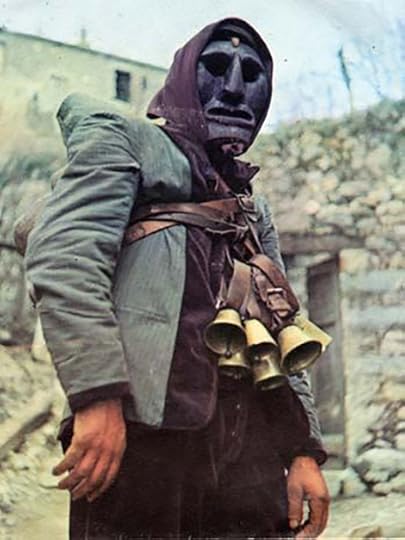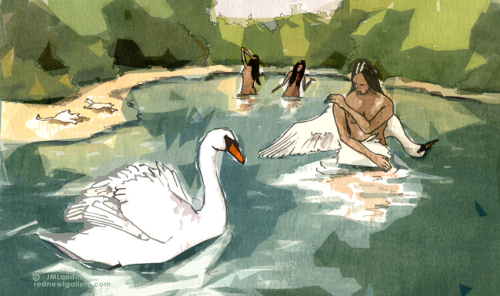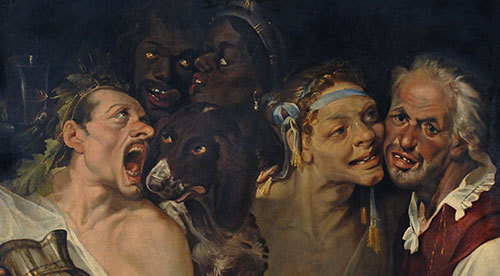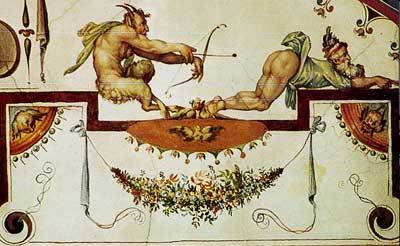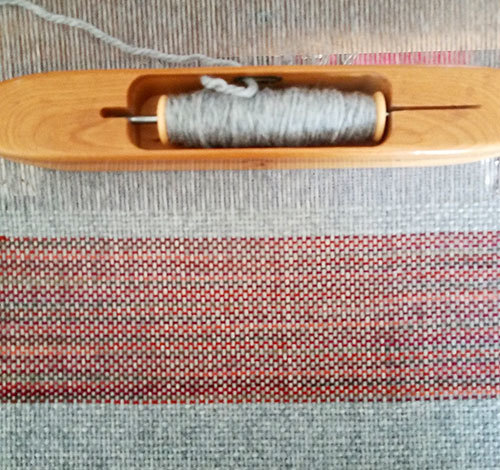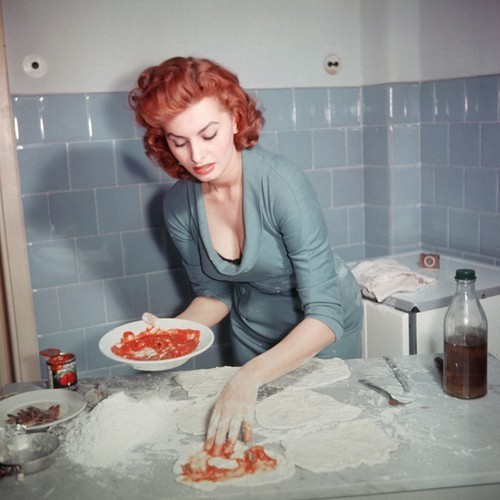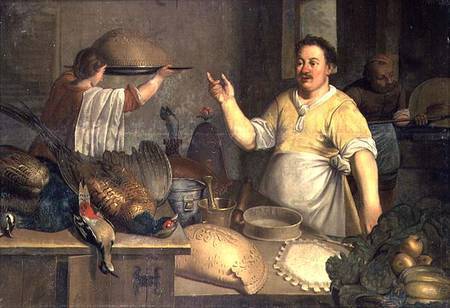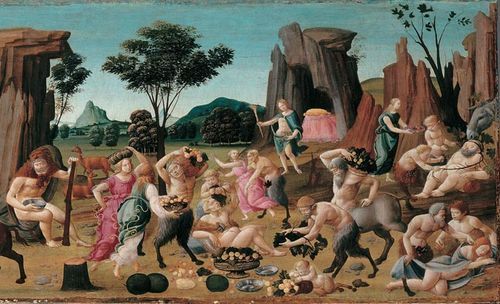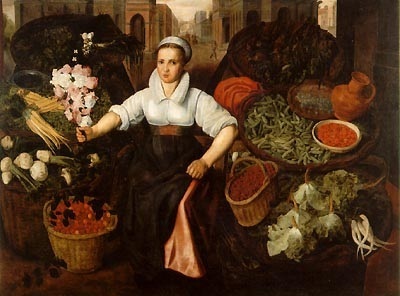Midori Snyder's Blog, page 28
May 11, 2017
Research Notes: Mask and Trance I
When creating the characters of the masks in The Innamorati (and they are a lively bunch) I was profoundly influenced by both the traditions of the Commedia Dell'Arte but also by Keith Johnstones' brilliant work Impro, on improvisation for actors and the power of the mask to influence the actor through a form of possession. The mask doesn't merely rest on the actor's face according to Johnstone, but rather takes control of his every movement, his voice, his very being.
I saw this myself once many years ago when a local theater troupe wanted to do a production of a weird little one act play by Yeats called "The Cat and the Moon." The play has only two characters -- a blind man and a lame man -- both who want to visit a well in hopes of being cured by a saint. The play begins in broad humor as the lame man rides the shoulders of the blind toward their goal. But it descends into a frightening sort of violence the closer to the well they come. The play was being performed at a festival, but the director, coming from Ireland, would not arrive until a week before the show. To prepare, the actors memorized their lines cold, and I mean really solid. The director would arrive and they would have a week to spend on sets, blocking, and fine tuning the actors' performances.
As requested by the director, I made two masks -- white grotesque faces for each character. More Greek than Commedia as they were full masks with wide open leering mouths so that the actors' voices could be clearly heard. I brought them to the first rehersal with the director and the actors fussed about putting them on, touching their faces nervously (a no-no in mask work since it can break the illusion), clearly uncomfortable. Just before they began the first run through, the director turned to me and said, "Watch, they won't know any of their lines." I was astonished by the remark as I heard the actors speed through the play without a hitch. "Why?" I asked. He answered, "Because the masks don't know the words yet."
And fall apart they did -- stammering, stumbling, struggling not to touch the mask, completely lost through the whole run of the short one act play. At the end the actors took off the masks, their faces red and sweaty, and relieved to free of them. "Again," the director called, adding "Keep your hands off the masks." The second time was better, but still awkward, dropping lines, a hand straying upward and then remembering, waving away the desire. The third, then the fourth, the fifth. And then it happened. The masks knew the words, and the actors surrendered to their possession. I saw it happen in one chilling moment where the lame man in a fit of rage beats the blind man to death, and remains hunched like a animal over the prone body of mortally wounded man. From his crouch the mask turned toward us and it was utterly terrifying. The eyes were black holes in the grotesque white face and it seemed as if the mouth has become even crueler and more predatory. The actor's entire body seemed bent to the will of the mask. The hair stood up on my arms and I felt a chill across my neck. The director exhaled hard and said me to "See...now the mask knows."
When the rehearsal was done, the actors removed their masks very slowly. They seemed bewildered and not a little frightened by the experience of surrendering so fully to the mask. It took them a while to return to themselves -- though shots of whiskey seemed theraputic to speeding up the process. I would say it took courage for them to return to the masks for the actual performances and I can't say as they ever got used to the eerieness of it.
Years later, when I would begin writing The Innamorati, that memory of those possessed actors fueled parts of the plot, allowed me in a way to create masks that were fully formed creatures, able to speak for themselves, able to interact with those wise enough to see their power.
Photo Credit: La Cornacchie della Moda
May 5, 2017
Knitting Manly Things
I follow a lot of knitters on Instagram who post beautiful, homey pics with their knitting, tea in fine china cups, a flower tablecloth. But I am knitting dish cloths in camo colors for my guys...so I thought a change of decor was in order.
April 28, 2017
A Few Thoughts on The Swan Maiden Narratives
Rediscovering earlier notes for my article The Swan Maiden's Feathered Robe -- I always like to circle back to these notes because they continue to offer insights. These were from BF LEavy, In Search of the Swan Maiden: A Narrative on Folklore and Gender.
I have long been fascinated by the "Animal Bride" stories for their narrative tension. So often in fairy tales, rites of passage narratives lead to the successful initiation into adulthood and marriage. But Animal Brides prove more of a cautionary tale -- and seem to end as often in misery and unhappy marriages.
One of the more interesting observations I came across in my reading is a quote from Bruce Kapferer in Barbara Fass Leavy's In Search of the Swan Maiden that Animal Bride stories (such as Selkie or Swan Maiden stories where the animal bride is coerced into marriage by the theft of her animal skin) present a paradox of women's lives in the tales:
Women " 'believed to be more quickly prone than a man to revert to a state of nature...are nonetheless entrusted with the task of rooting man in culture and raising her children in such a way as to prevent behavior threatening to society as a whole.' " It's an interesting idea when we recall the marriages of Selkies, Kitsune, Mermaids, and Swan Maidens -- where the seemingly compliant brides actually retain their wild natures under the veneer of domestication and the presumed pull of children. The tension is never resolved in the story -- the domestic and the wild are never integrated, except in the children who possess both human and animal traits -- and more often those children revert to animal form and follow their mother.
If we consider that the body of narratives in any society generally cluster around areas of the greatest social conflict in a community -- rites of passage to adulthood, marriage, and the birth of children -- it makes sense that there will be stories that serve to affirm and encourage the listeners to embrace social expectations, just as there would be tales that would explore the emotional devastation of such unions gone awry -- because they can and do in the real lives of the listeners.
Illustration : Swan Maidens, JM Landin, Themes of Swan Maiden Lore
April 21, 2017
Jack and Jill of the Green
I have recently come across a host of wonderful green images of spring -- a rarity in this desert to be treasured. It reminds of more northern places, where rhubarb leaves unfurl through spring snow, lambs gambol in wet green fields, and the air itself is heavy with dew and rain, and earthly scents. So here is an 18th century bodice fit for Titania, Queen of the Fairies, and splendid images from photographer Morgan Silk of Jack and Jill of the Green. And for more fun reading, have a look at Terri Windling's wonderful article Wild Folklore.
April 10, 2017
Insults: How Do I Detest Thee?
Quite a few reviews of The Innamorati mentioned with some glee and the occasional admiration the insults hurled back and forth between characters in the novel. Many of them are historical, taken from a variety of Renaissance story-telling traditions, some belong to the Commedia dell'Arte, and some I invented, simply because I found myself caught up in the spirit of colorful, scatological (sooo many ways to use shit), and wildly creative name-calling. I think in the Commedia and certainly in the Renaissance tales they were meant to illicit laughter -- and lots of it -- the cruder the better. Even today, Italy has a vibrant culture of insulting, in word and in gesture, and modern day grandmothers can shame obstreperous youth with a savage insult. So here is a list of some of them, mostly from research and and some invented (though I can't remember which ones) that made it into the novel.
Pox-faced shiteater
Pezzo di merda (piece of shit)
Cazzone cafone (peasant dickhead)
Piece of Spanish shit!
Italian sop
Paella-breath
Pasta-head
Crab louse, get off my tits
Pus-plague sore
Fuck off, you shitty bed-pissing hangman's knot
You slimy snot-nosed, prickless son of a bitch
Old nun's fart
Testa di merda (shit head)
Tool of another's lust
Drawbridge mouth that's always open
Stinking sardine
Bowel builder
Graveyard asparagus
Jibbering dildo
Plague-louse
Pig's spit
Pile of rotten straw
Brothel-bred northern-shithead
Syphilitic southern trash sired by a hundred fathers
Spawn of a jackass
Diaper-assed boy
Piss-pot
Son of a taxed woman (a prostitute)
Blood-sucking witch
Baby-smotherer
Shit-dressed
Wicked and libidinous wolf
April 7, 2017
What Weaving and Writing Share
One of the things weaving and writing share is unweaving and discarding false starts. I didn't love the twill enough to keep it. Too many things I should have done differently in the set up. Unwove it and started over, adding in the left over self-stripping sock yarns. I'm liking it. It will be simple but the yarn is soft and I think it will make a good scarf after all. I am pushed now to remember how to properly set up the selvages, providing double threading the reed at the margins to get a nice solid edge. The twill was a bit of a mess with too many floats and I just couldn't bring myself to finish it because I knew I would be always looking at the messy edge.
On a funny note, my fitbit step tracker apparently thinks pounding the treadles all afternoon is the same as walking and awarded me 10K steps by mid-afternoon.
I am happy with the soft grey wool and the inserts of self-stripping sock yarn that feel very calm and at home among the warp.
April 5, 2017
Jack Zipes: The Scorcerer's Apprentice, An Anthology of Magical Tales
So looking forward to reading this new anthology, edited by Jack Zipes, a collection of world tales on the scorcerer's apprentice. Should have a review up early next week. These stories go so well with strong coffee, itself a magical concoction.
April 4, 2017
Left Me With a Dark Turn of Mind
I love Gillian Welch's album "The Harrow and the Harvest" -- but it is this song that gives me the chills. Not sure what it is I love best -- perhaps it's the way the young woman transforms a haunted past into a reclaimed realm. The night becomes beautiful and evocative, the bones in the river, the moonlight on the trees, the nightbirds singing. She is content to be "blessed wth a dark turn of mind," rather than the girls "bright as the morning."
April 3, 2017
Research Notes II: Culinary Arts
When I was in Italy, I happen to read a murder mystery set in the 16th century -- the same time period I was using to set The Innamorati. I read the first 100 pages which took place over a two day period in the story and not once had the characters eaten anything. I mentioned this to my Italian friend and she answered with shocked horror, "Not even pasta??" It was unthinkable. A reviewer once complained that my novel would have been better if I hadn't bothered writing so much about the food -- or sex -- which I think missed the point of the novel.
Sophia Loren (from Life Magazine) "Everything you see, I owe to spaghetti."
Research Notes I: Culinary Arts in the 16th Century.
Researching food is always fun, partially to make to make sure that I won't make any grievous errors putting in a dish that wasn't around until a century later -- or and even more important -- miss the chance to put in a dish that by its very design and substance is more fantastic and magical than anything I could have imagined. Maybe that is part of the allure of research -- discovering that the facts are so much more satisfying to write about than the imagined ones.
 So to this lovely little book: Tastes and Temptations, Food and Art in Renaissance Italy by John Varriano -- an excellent examination of the relationship between the artists of the Renaissance and the great chefs of the same period. Varriano demonstrates the ways in which cooks and artists relied more on imagination in the production of their work (and often drawing inspiration from each other), and shared an affinity for ritual and the symbolic value of forms to represent the sacred, nature, and the senses. They were exercises in artifice to make aesthetic statements -- a salmon mousse molded to resemble a goat (so as to confuse and heighten the experience of eating one thing while imagining another) or an exquisite Ovidian scene of diners painted at the bottom of one's soup bowl. And in other ways, the relationship was organically close -- the artists creating still lifes using paints whose binding agents were mainly egg and lard.
So to this lovely little book: Tastes and Temptations, Food and Art in Renaissance Italy by John Varriano -- an excellent examination of the relationship between the artists of the Renaissance and the great chefs of the same period. Varriano demonstrates the ways in which cooks and artists relied more on imagination in the production of their work (and often drawing inspiration from each other), and shared an affinity for ritual and the symbolic value of forms to represent the sacred, nature, and the senses. They were exercises in artifice to make aesthetic statements -- a salmon mousse molded to resemble a goat (so as to confuse and heighten the experience of eating one thing while imagining another) or an exquisite Ovidian scene of diners painted at the bottom of one's soup bowl. And in other ways, the relationship was organically close -- the artists creating still lifes using paints whose binding agents were mainly egg and lard.
I started reading this study in part because I needed to know if the roasted peacock I placed in a scene was acceptable -- and then discovered after reading that I had in fact grossly under sold it in the scene. One of the great chefs of the mid 1500s, Bartolomeo Scappi, known for dramatic and delectable skill (a kind of culinary sprezzetura -- a word that needs a post of its own to explain) enjoyed cooking that "vainglorious creature," using an extravagant assortment of spices and a method of preparation that reassembled the bird with metal rods and reattached its feathers in order to serve it up come se fosse vivo-- "as if it were still alive." So yes -- my peacock is in. With bells and feathers and beak.
But this would have been one of many, many dishes. Consider this "simple meal" prepared by Scappi and his army of cooks -- a modest three course feast on a day of abstinence (meatless Friday) with forty guests, and "the first two courses consisted of fifty dishes served on four hundred pieces of gold, silver, and maiolica tableware," which were then followed by twenty-seven desserts served in two hundred and sixteen bowls and dishes. And..there were "six edible statues" of nymphs, exotic creatures and mythological inventions, "the first made of sugar; the second of butter; and the third, pasta." The meal then ended with scented toothpicks and posies of silk flowers with gold stems for each guest.
The hardest part now of writing that scene is going to be to reign in the desire to over indulge -- as artists and cooks are able to do -- so the reader won't somewhere midway through the scene, throw the book down and go in search of something good to eat. Like a pan of brownies or an entire brie with slices of pear, or a half a pound of prosciutto and green olives. Sigh...now I am hungry.
Art: Paolo Veronese, Wedding at Cana; Bartolomeo Passarotti, The Baker Prearing Pies; Bartolomea di Giovanni, The Wedding of Thetis and Peleus; Vincenzo Campi, Market Day.
Midori Snyder's Blog
- Midori Snyder's profile
- 87 followers


